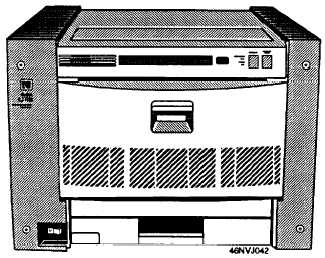transfer, and printers that use silver-halide photographic
paper to produce digital images. Color copiers can also
be used to print digital images to provide suitable
quality at high speed and relatively low cost. Like most
electronic equipment, a large variety of printers are
available on the market. They range from hundreds to
thousands of dollars.
Most printers used for making color prints from
digital images use three colors: cyan, yellow, and
magenta (CYM). Some printers match the full cyan,
yellow, magenta, and black (CY MK) process.
Located between the printer and the computer is a
RASTER IMAGE PROCESSOR (RIP) or a PAGE
DESCRIPTION LANGUAGE (PDL). This is a
software and hardware configuration that permits
information to flow to the printer so the printer knows
where to place the image on the paper.
Thermal-Dye Transfer Printers
Thermal-dye transfer printers are often called dye-
sublimation or dye-diffusion thermal-transfer printers.
This system provides high quality and an
environmentally safe method of transferring images to
print and transparency materials without using
chemicals (fig. 3-10).
The thermal-dye transfer printing process uses
thousands of tiny heating elements that come in contact
with "donor ribbons." Each donor ribbon releases a
gaseous color dye when heated. Three-color printers
have cyan, magenta, and yellow ribbons (CMY);
four-color printers also include a separate black ribbon
(CMYK). The amount of heat from each element
Figure 3-10.—Kodak 7720 thermal-dye transfer printer.
controls the amount of dye being transferred to the print
material. The blend of the gaseous colors creates a
continuous-tone image.
The quality of a thermal-dye transfer print
resembles a print made from conventional silver-halide
paper. The resolution of thermal-dye transfer printers
ranges from 160 to 300 dpi. Resolution is limited by
the thermal printing head. Thermal-dye transfer
printers can produce prints from 3.5 by 5 inches up to
14 by 17 inches.
Inkjet Printers
Inkjet printers are used in a variety of situations
from newsprint to transparency materials. Inkjet
printers use cyan, magenta, yellow, or black streams of
ink to produce images. Inkjet printers today are capable
of producing excellent continuous-tone color prints by
using variable-size dots of ink that are precisely
controlled. Inkjet printers are nonimpact printers that
use droplets of ink. As the head of the printer moves
across the surface of the paper, it shoots a stream of tiny
electrostatically charged ink drops at the paper.
Color Copiers
Color copiers were originally designed strictly for
copying color originals. Today, however, color copiers
have the added capability of copying transparencies and
being connected directly to imaging workstations
through an interface. This interface accepts digital
signals to produce color photographs.
Color copiers are capable of producing prints with
a true photographic appearance. One minor drawback
to prints produced on color copiers is they are printed
on plain, bond paper stock Color copiers use a laser
device that fuses toner to paper to create the image.
Some color copiers, such as the Canon Color Laser
Copier 500 (fig. 3-11), can be used as a flatbed scanner
in addition to providing high-quality color images
directly from computer files. The resolution of such
color copiers is 400 dpi on standard copier paper.
Thermal-Wax Transfer Printers
Thermal-wax transfer printers operate on the same
principle as thermal-dye transfer printers.
Thermal-wax transfer printers use cyan, magenta, and
yellow wax type of pigments instead of ink to produce
images.
3-14



